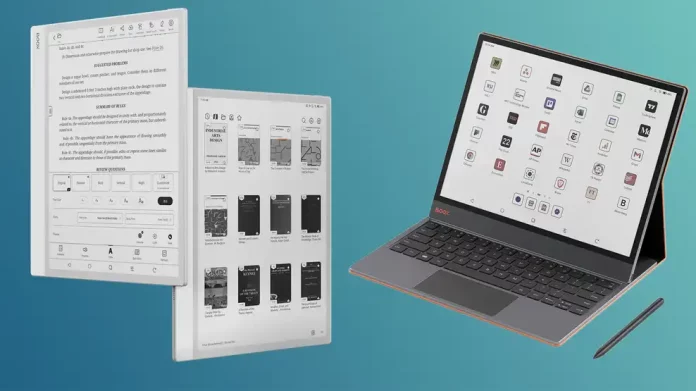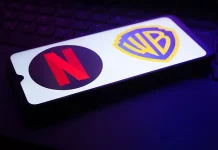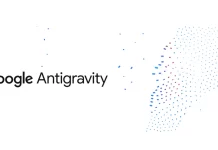While Apple’s iPad is the most well-known tablet on the market, it’s not always the ideal choice—especially if you suffer from eye strain, get easily distracted, or simply prefer a reading or writing experience that feels more like paper. If any of that resonates, then an e-ink tablet might be exactly what you need. Known for their low-distraction design, easy readability, and often exceptional handwriting support, e-ink tablets offer a compelling alternative for students, professionals, and anyone craving more focus in their digital life.
E-ink tablets have steadily grown in popularity over the years, and today there’s a rich selection available. As an avid e-ink enthusiast who has rigorously tested many devices, I’m well-positioned to recommend options whether you want a paper substitute, a digital “second brain,” or simply an efficient e-reader.
Quick Summary — The Best E-Ink Tablets
E-ink technology first gained widespread attention with the Amazon Kindle. Like many, that was my introduction, and I’ve been hooked ever since. Unlike traditional tablet LCDs, which use bright backlights and rapid screen refreshes to display motion, e-ink screens don’t emit light directly into your eyes. They only refresh the display as needed—even if that means just once per page turn—making them easier on your eyes over long reading sessions.
Over time, e-ink tablets have evolved from basic e-readers into versatile devices. Many now run customized versions of Android, with some granting access to the Google Play Store. They support a broad array of reading, writing, planning, and productivity apps. Their handwriting experience is often superior too, thanks to Wacom EMR technology combined with micro-textured surfaces that mimic the tactile feel of real paper.
Despite these advancements, the inherent limitations of e-ink displays mean these devices are far less distracting. While a few models allow limited web browsing or video playback, their slower refresh rates and muted colors encourage focus and productivity over casual scrolling and multimedia indulgence.
Choosing the Right E-Ink Tablet
With technology steadily improving, selecting an e-ink tablet involves balancing several features to suit your needs. Here are key factors to consider:
Stylus Support
E-ink tablets primarily use either Wacom EMR (electromagnetic resonance) styluses or capacitive styluses. Wacom EMR pens are renowned for natural, precise writing with excellent palm rejection and never require charging. EMR pens are interchangeable among compatible tablets. Capacitive styluses, more common on traditional tablets, come in Bluetooth, USI, and USI 2.0 standards—USI 2.0 is backward compatible with USI, but not vice versa—making compatibility a bit tricky. For the best handwriting experience, prioritize tablets with Wacom EMR support.
Tablet Size
Sizes vary widely—from the pocket-friendly Boox Palma to the expansive 13.3-inch Boox Note Max. Smaller tablets excel as portable e-readers, while larger screens better handle large PDFs or replicate a physical sheet of paper. For those uncertain, mid-sized options around 10.3 inches offer a balanced mix of portability and productivity.
Color vs. Monochrome
Color e-ink screens are valuable if you frequently view color images, use highlighting, or want to browse visually rich apps. Monochrome displays, however, are typically cheaper and render text and sketches crisply without distractions. Keep in mind, color e-ink is not as vibrant as LCD displays; it’s better compared to color newsprint than traditional tablet screens.
Operating System and App Availability
Evaluate whether you want access to an app ecosystem or prefer a device focused on distraction-free reading and note-taking. Some tablets limit you to built-in apps to enhance focus; others—like those from Boox—offer full Android environments and Google Play access. Just because a tablet runs Android doesn’t guarantee Play Store support, so verify compatibility with your preferred apps.
Screen Resolution
While most modern e-ink tablets feature crisp, readable displays, resolution and pixel density (PPI) still matter. 300 PPI is the benchmark for sharp text and detailed illustrations. In color e-ink, newer panel tech has improved vibrancy and reduced ghosting, so newer models tend to offer a better experience. Reading user reviews before purchase is always wise.
Importance of Reviews
Even if a tablet looks perfect on paper, real-world feedback on ghosting, app performance, update frequency, and battery life can reveal important factors. These features have subjective elements and may vary with usage style, so thorough research and reviews can save you from later frustrations.
Top Picks for E-Ink Tablets
1. Boox Tab X C / Boox Note Max
Boox leads the pack with top-tier performance in both color and handwriting-centric tablets. The Boox Tab X C is the best color e-ink tablet, while the Boox Note Max excels for large-format handwriting. Both feature A4-sized 13.3-inch displays with a sharp 300 PPI resolution.
The Tab X C targets users who want a more traditional tablet experience with typing, web browsing, and apps, while the Note Max focuses on writing and note-taking with a micro-textured screen for a natural pen-to-paper feeling. Both run on a refined Boox OS with strong third-party app compatibility, including Microsoft OneNote optimization.
A notable downside: the Tab X C uses a capacitive stylus with haptic feedback instead of Wacom EMR, which might impact writing precision. The Note Max, with EMR support, offers a superior handwriting experience, complemented by optional Bluetooth keyboards for typing.
2. Viwoods AI Paper
The Viwoods AI Paper has been a standout surprise this year, especially for students. It pairs a 10.3-inch 300 PPI screen with strong handwriting, sketching, planning, and organizational tools.
A unique feature is deep AI integration: the tablet connects to ChatGPT and other large language models, allowing real-time interaction, contextual assistance, and personalized knowledge base creation. It also synchronizes with Google Drive and Calendar, Gmail, and Microsoft Outlook, making it a powerful academic companion.
Its ability to recognize handwritten notes for search and text conversion enhances productivity. Frequent software updates continuously expand its AI and organizational features. This tablet offers one of the best handwriting experiences available, supports Google Play apps, and is highly recommended not just for students but for any power user looking for an intelligent e-ink device.




